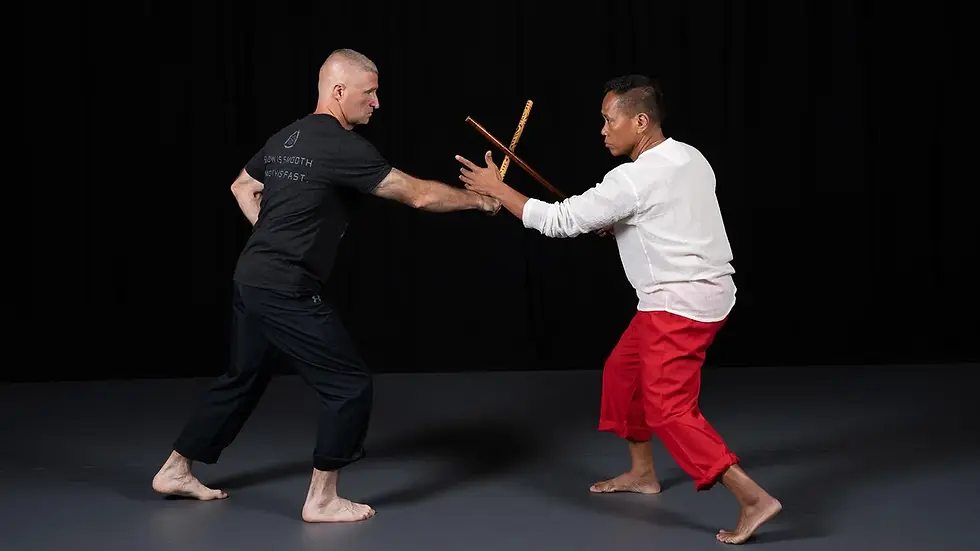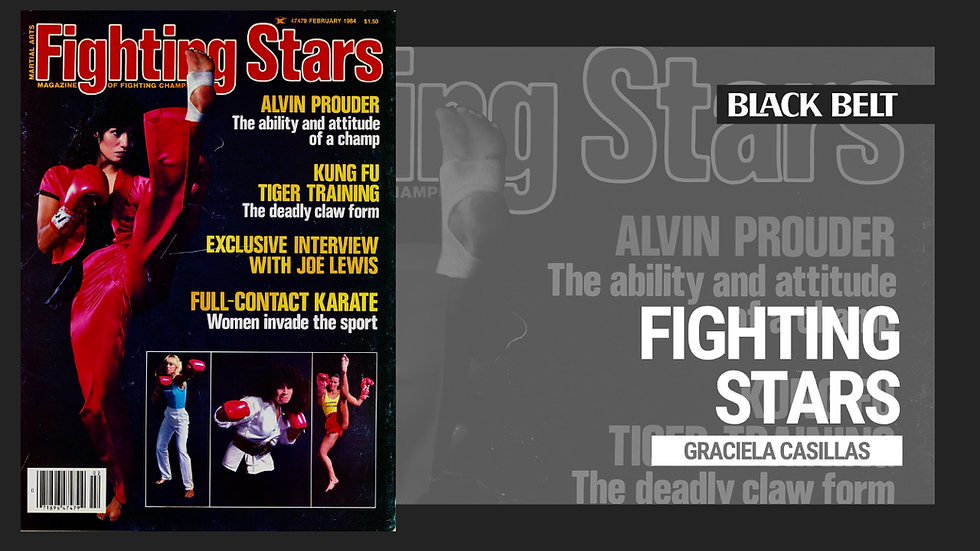5 Misconceptions About Escrima: Part 1
- Black Belt Team
- Sep 29, 2023
- 3 min read

Expand your knowledge of the Filipino martial arts!
When escrima — which is often used interchangeably with the terms arnis and kali — was introduced to America, it was done mainly as a seminar martial art. Of course, there were a few schools, mostly near large Filipino communities around the country, but most martial artists were not exposed to the arts of the Philippines until Remy Presas, Leo T. Gaje Jr., Dan Inosanto — all members of the Black Belt Hall of Fame — and others began doing seminars.
Unfortunately, to make escrima more marketable, some instructors presented it in a way that caused people to get the wrong idea about what it really was. In some cases, the martial art was simplified to make it easier for seminar students to learn. In others, things were actually changed to fit the legal atmosphere of the United States.
One of the biggest mistakes was in marketing the martial art as an add-on to other arts. Many magazine articles claimed that stick training would add to a student’s taekwondo or jujitsu skill set. This helped foster a climate in which even instructors began to believe some of these incorrect ideas.
This five-part post exposes the most common fallacies about the Filipino martial arts.
Misconception No. 1: Stick Fighters Must Contend With Separate Fighting Ranges
The idea that there are specific and separate fighting ranges, and that escrima practitioners focus on and train in only one range (i.e. long range, middle range or close range) is untrue. The fact is, all styles developed according to the restrictions of the local terrain and the body type and physical ability of their creator. Additionally, nearly every real self-defense encounter involves all fighting ranges at some point.
Escrimadors (escrima practitioners) from heavily forested or jungle areas developed thrusting styles and used longer sticks because slashing and striking were not practical in the heavy foliage. Movements were also completely dependent on the vegetation.
The styles that developed in the rice-farming areas used linear footwork patterns, where circular and sidestepping movements were impossible because the small raised paths between rice paddies limited the options. The escrimador could not make very heavy strikes because the ground would be slippery, so the style focused on blocking techniques and middle-range measured blows.
The styles that developed in open areas or on plantations were able to take advantage of the terrain and use more aggressive slashing and striking attacks, along with more complicated footwork. These practitioners would have begun an encounter at long range, looked for openings and then closed to middle or close range to strike. If they were still able, they would have immediately moved back out to long range to prepare a new attack.

The systems that now claim to be close range developed within the cities. Fighting in doorways, alleys and small open areas determined the length of the weapon and the most effective techniques. The increased use of the stick instead of the blade also dictated a closer range because now one could grab the stick.

If these escrimadors were taken out of the city to one of the other types of terrain mentioned above, their fighting style would have quickly adapted because a close-range urban style in heavy jungle or wide-open fields would have been disadvantageous if the practitioner had no closing or other long-range skills.
The opposite is also true: The jungle fighter would have quickly shifted to a more effective style after moving to the city.
The point is that escrima is a style of fighting that takes whatever the environment gives — and makes it work. To call oneself an escrimador means not limiting oneself to a single fighting range or a particular weapon, and any system that makes that distinction is doing a disservice to its practitioners.
Real fights constantly flow back and forth between all the ranges, and one must be prepared to handle whatever happens wherever it happens.
About the author: Steven C. Drape has practiced escrima for more than 17 years. He is the U.S. representative of the Institute of Filipino Martial Arts in Cebu, Republic of the Philippines.


